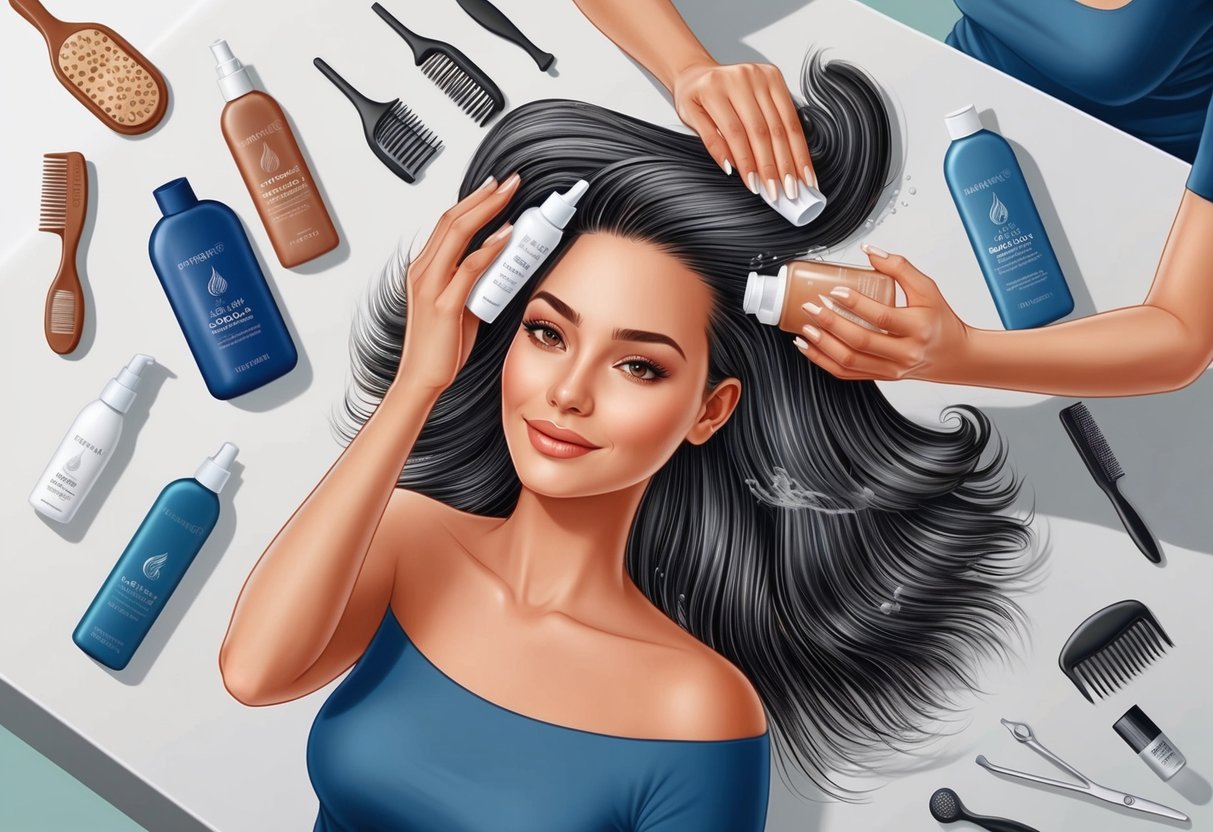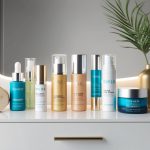Best Hair Care Routine for Damaged Hair: Expert Tips for Stronger, Healthier Hair
Moisturizing Conditioners
Moisturizing conditioners are essential in restoring softness and manageability to hair that is dry or chemically treated. These conditioners are usually rich in humectants like glycerin and natural oils such as jojoba or coconut, which lock in water and guard against further moisture loss.
For best results, a damaged hair routine should include applying conditioner from mid-length to ends and avoiding the scalp, which can become heavy or greasy. Leave-in conditioners and deep conditioning masks boost weekly hydration.
Consider using conditioners specially formulated for color-treated or processed hair. Consistent use leads to improved elasticity, reduced split ends, and a noticeably sleeker texture.
Advice on selecting the right conditioner by hair type is provided on platforms like HairCode.
Sulfate-Free Options
Sulfate-free shampoos and conditioners are recommended for anyone seeking a gentler cleansing experience. Sulfates, such as sodium lauryl sulfate or sodium laureth sulfate, can cause excessive dryness and strip hair of natural oils, especially in already sensitized or color-treated hair.
Products labeled “sulfate-free” tend to preserve hydration within the hair shaft and reduce irritation or itchiness for sensitive scalps. These options still effectively cleanse the scalp and hair, but without the harsh effects associated with traditional foaming agents.
Switching to sulfate-free products may result in less lather, but this does not compromise cleaning power. For detailed guidance on picking the right shampoo based on hair concerns, refer to advice from Rossano Ferretti’s damaged hair routine.
Deep Conditioning and Hair Treatments

Deep conditioning and targeted hair treatments are key for repairing damaged hair and preventing future breakage. Using the right products can restore hydration, improve elasticity, and strengthen strands prone to dryness or split ends.
Deep Conditioning Benefits
Deep conditioning is more than an extra step in a hair care routine. It provides concentrated hydration and nourishment, making it crucial for hair weakened by coloring or frequent heat styling.
A deep conditioner penetrates the hair shaft, reduces moisture loss, and helps restore natural shine and softness. Those with dry, brittle, or chemically treated hair experience fewer tangles and less breakage when deep conditioning weekly.
Frequent treatments improve manageability and reduce split ends. According to experts, people who make deep conditioning a routine see healthier hair that resists damage and frizz over time.
For those with colored hair or highlights such as balayage, regular use of deep conditioners keeps the color vibrant and helps counteract the dehydrating effects of coloring. Treatments safe for color-treated hair are especially beneficial to maintaining gloss and smoothness.
For more detailed steps on at-home deep conditioning, see this expert guide.
Best Hair Masks for Repair
Hair masks are an intensive treatment for repairing damaged hair. The most effective hair masks use ingredients such as fatty acids, argan oil, shea butter, and nourishing proteins.
These help rebuild the hair cuticle, smooth roughness, and restore flexibility. A good hair mask should be chosen based on your hair’s specific needs:
- Dry, brittle hair: Hydrating masks with shea butter, coconut oil, or avocado
- Colored or bleached hair: Color-safe masks that smooth and prevent fading
- Breakage-prone hair: Strengthening masks containing keratin or amino acids
Apply a hair mask once a week for best results. Leave it on for 10–30 minutes, then rinse thoroughly.
A weekly deep treatment routine offers lasting benefits for severely damaged strands.
Protein and Moisture Balance
Maintaining balance between protein and moisture is vital for healthy hair. Hair naturally loses protein through heat styling, chemical processes, and exposure to the sun.
Protein treatments restore strength and elasticity, while moisture-based treatments keep hair soft and flexible. Signs your hair needs protein include excessive breakage, mushy texture when wet, and limp, lifeless strands.
Protein overload, however, can make hair stiff and brittle, so treatments should be used thoughtfully. Alternate between protein treatments and moisturizing deep conditioners to ensure neither aspect is neglected.
Choose products labeled “protein treatment” for strengthening hair, and look for ingredients such as keratin, silk proteins, or hydrolyzed wheat protein. If your hair feels rough and is prone to snapping, a moisture-rich mask is the safer starting point.
Top Recommended Brands
Choosing quality hair treatment products from trusted brands helps maximize results.
Kérastase is highly recommended for its reparative conditioners and hair masks tailored to different damage levels.
Their Resistance line targets breakage and is favored by those with color-processed or weakened hair.
Other popular brands include Olaplex, which is known for its at-home bond-building treatments.
Redken offers options like Acidic Bonding Concentrate.
For deep conditioning, masks from Briogeo, Moroccanoil, and L’Oréal Professionnel are praised for hydrating properties and effectiveness in reducing split ends.
Some brands also offer hair gloss treatments that add shine and tone color.
These can be part of a routine for balayage or color-treated hair.
When selecting a product, check compatibility with your hair type and current routine.
Avoid formulas with high levels of sulfates or drying alcohols.
Protective Styling and Minimizing Damage
Effectively protecting hair from breakage and dryness requires careful attention to daily habits.
Making the right choices with heat and chemical treatments can prevent further hair damage and promote lasting hair health.
Safe Heat Styling Practices
Heat styling tools, such as flat irons, curling wands, and blow dryers, are common causes of weakened and damaged hair.
Using these tools on a high heat setting can strip moisture and break down hair structure.
To reduce potential harm, always apply a heat protectant before using any hot tool.
Set the temperature at the lowest effective level for your hair type.
Fine or already damaged hair should never be exposed to the highest heat settings.
If possible, limit styling to special occasions rather than daily use.
On days when heat styling is not essential, opt for air drying or heat-free styling methods, such as braids, twists, or rollers.
For further specifics, consider adjusting temperature settings and reducing frequency to prevent excessive heat damage.



